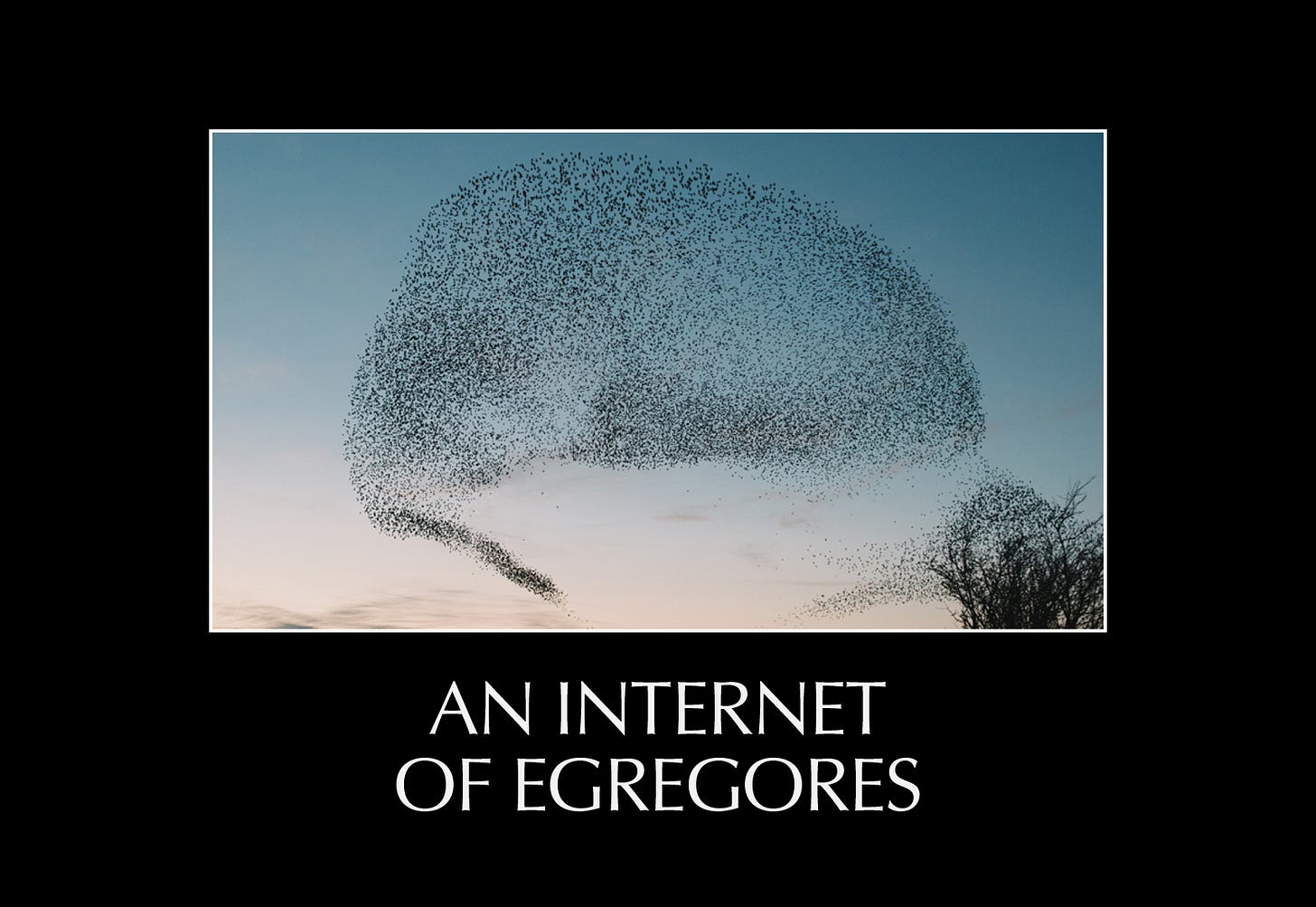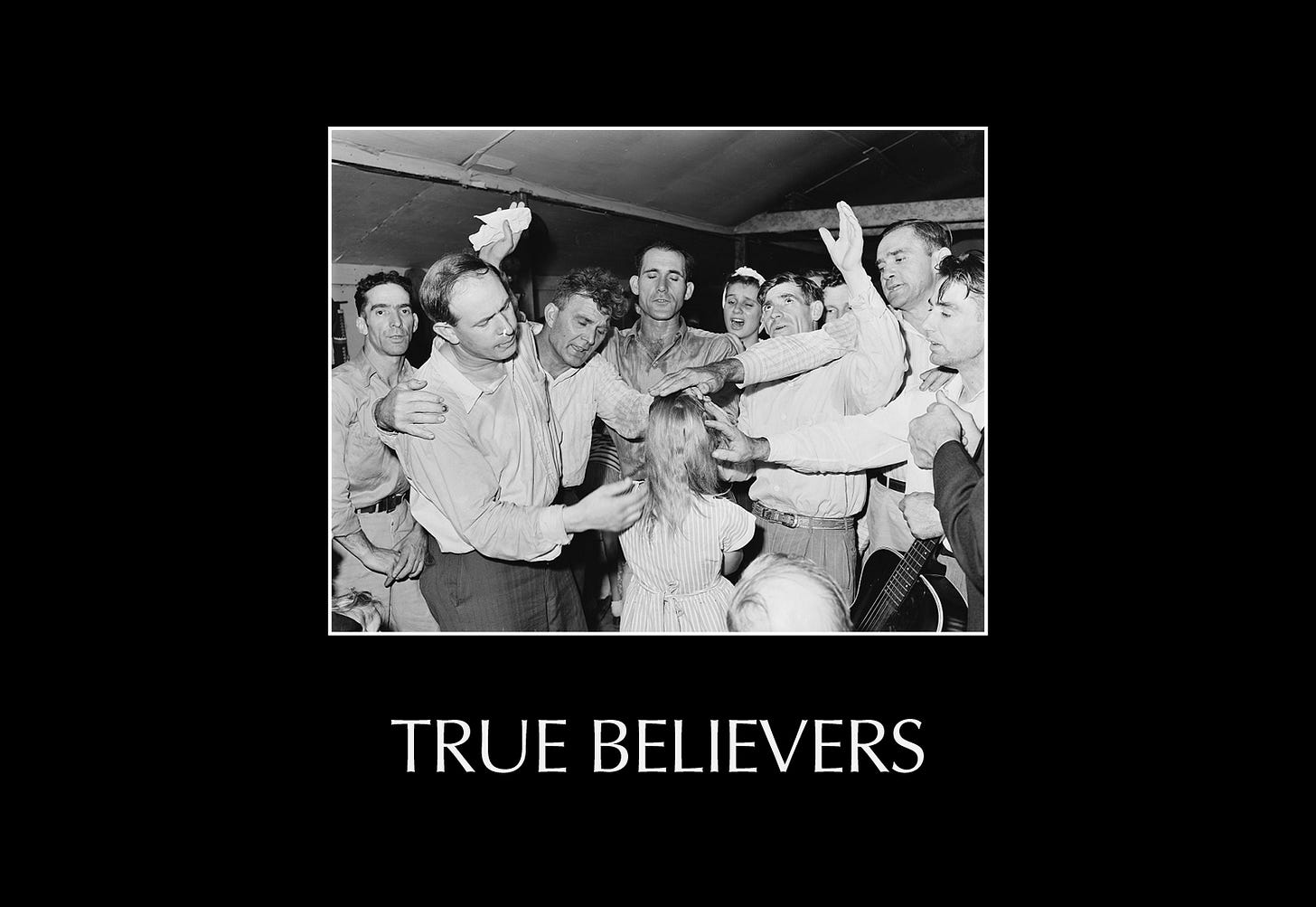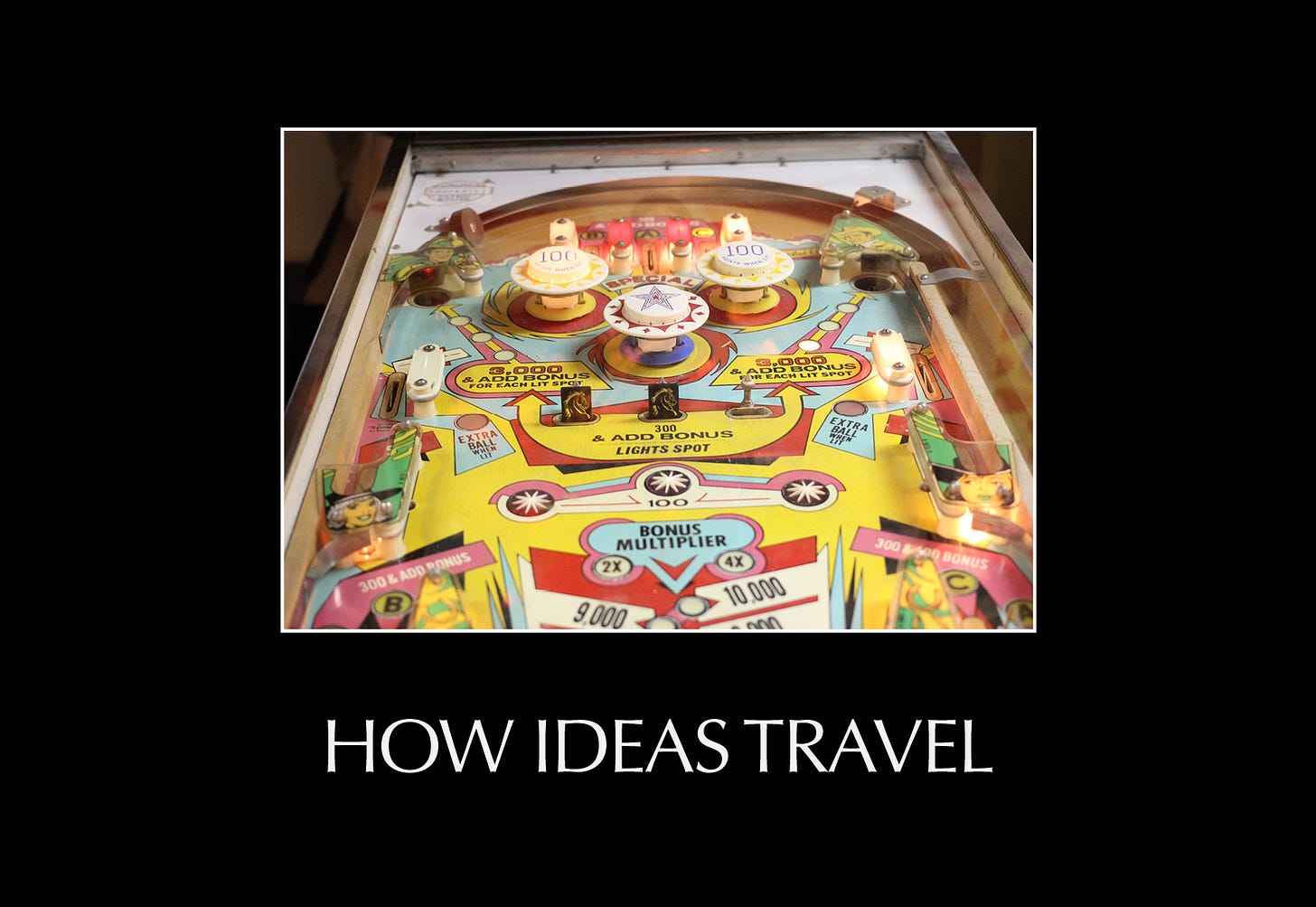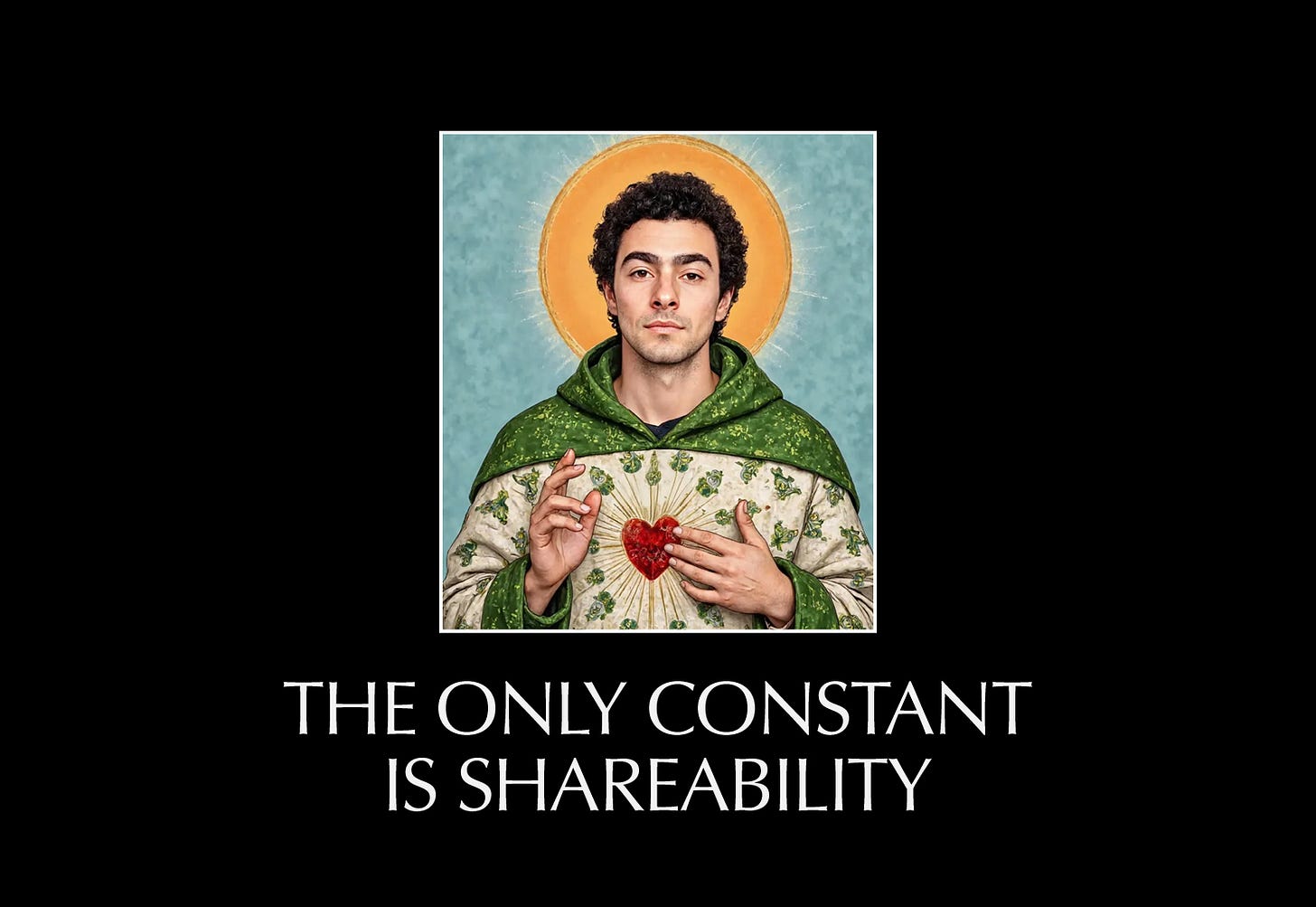In the past we could trace clear lines of where cultural influence came from – be it the ivory towers to the masses, or from street level to the mainstream. But now culture as understood through art, music, fashion, and film, has become less influential, dull even, as it moved downstream. Instead, erratic geopolitical maneuvering, the emergence of mutant ideologies, and the wild west convergence of speculation and innovation coming from the tech industry in the last decade are now shaping the thoughtforms and collective beliefs of our moment.
The internet today is a landscape made up of what artist and writer Gary Zhexi Zhang has termed “egregores”. Originally heralding from occult practice, egregores are a name for collective thoughtforms that are made manifest in reality through shared belief and coordinated action.
Egregores are in Zhexi Zhang’s words “Influencers, brands, conspiracies, political movements, memes, nations [...] entities that grow, die, and move through the world by means of group identification, offering their human hosts a representational, narrative vessel to manifest their desires and beliefs.” These are thoughtforms that exist somewhere between individual and collective identity, sustained through their memeworthy shareability and the platform mechanics that make them seem to come from everywhere at once.
This is New World Order. A six part newsletter series about how power, politics and ideologies merge with digital infrastructure in 2025. In our last two newsletters we described why being good is over and how this leads us to bet on a whole portfolio of identities and belief systems that let us best leverage our position.
In our third installment we look at how collective thoughtforms leaking out from fringe corners of our networks into the center of conversation can tell us about how information flows in this new landscape.
Surely a lot of ink has been spilled on last year's infamous brat campaign launched by musician Charli XCX, but it’s notably the first time a cultural egregore was manufactured so explicitly. The pale green square brat logo was the perfect case and point. Even if no one really knew what being brat was, we all believed in it for a summer because it contained that breathless aura of something exciting, even if vague. But the vagueness was in fact a feature.
Being strategically ambiguous, the logo and idea of brat were able to be entirely decoupled from the Charli XCX record they were supposed to be promoting and instead became a container for people to project their own narratives and group identification on.
And project we did. From the opportunism of the US presidential campaign for Kamala Harris doing everything in its power to milk Charli’s tweet that “Kamala IS brat,” to the endless branded products that were suddenly editioned in pale green, all the way to the very strange co-optation by military alliance NATO who promoted “peace” with quite possibly the most out-of-touch post imaginable, where brat would eventually meet its true spiritual exhaustion.
What brat teaches us is that creating mass culture involves aggregating parallel subcultural universes. When networks make the source of a meme, a cultural moment, or a codified meaning about something irrelevant, fragmented perspectives can converge on a singular thing, but for different reasons.
But culture has always operated on some degree of memetics that move through media or subtle codes in fashion and taste because culture itself was always a fleeting product of symbols and meaning that came and went. Only today, all media is culture and the flattening of how its served on platforms (and in print), where shampoo ads are placed next to images of war crimes are next to advice for personalized juice regimes, we see that even domains like politics and finance are becoming ecosystems in which egregores are made to flourish.
Crypto reminds us that money was perhaps the first true egregore. The rise and fall, and rise (and fall?) of crypto has seen the effect of cultural collective beliefs. Memecoins parlay belief by injecting literally mere enthusiasm about a hypothetical store of value referencing a cute DOGE meme, making millions for a group of true believers… or not.
Flood the zone with whispers of wealth and it won’t matter if half of the pseudonymous avatars are actually one institutional investor hoping for a bountiful exit, or if the market value is vibes based, or if there is actually very real utility in your project—you could still very well make millions if your savvy enough to have everyone tweeting about it or writing long endorsements on Telegram chats or Discord channels.
Egregores in the political domain give cause to how Qanon can enrapture millions globally in wild conspiratorial narratives that have motivated people to stake out pizza places and celebrities, or use dogwhistle “not-Hitler-salutes” to signal their allegiances on major media, or reanimating the idea of American “manifest destiny” to build your new network state tech utopia outside of weary regulation and the poor. What they all share in common is that they start as subtle media phenomena that leverage network effects and the power of populist narratives that are ambiguous enough for plausible deniability but adaptable enough to gain traction and galvanize belief for people all over the globe.
Egregores make explicit the power and shape of networks because their path of adoption shows us how thoughtforms travel and why people leverage them.
Egregores don’t want anything, but we want them.
They don't sell anything to us per se but they do offer a container of ideas that we can latch our desires on—even if those desires don’t exactly match-up nor relate back to the source.
Egregores gain their power not from being one thing, but from people collectively believing in something that they can attach their own, very different, meanings to. And once they have been exhausted by everyone’s use, they fade into obscurity as quickly as they ascended.
Ideas are contending with top-down regulatory pressure from governments and advocacy groups trying to control the information space to protect from bad actors and also suppress politically unfavorable material; populist backlashes like Qanon and egalitarian movements like BLM force the hand of credentialed information or others develop algospeak to evade censorship; while monopolist platforms parasiting your data to added revenue and pummel you with AI slop or rage porn to keep your attention.
It’s confusing.
And evading that pressure has become ever more possible with dark forest communities and second generation social media like TikTok, whose success is born out of placing relevance (connection to a topic) over popularity (accounts with the most followers) into the structure of their algorithm.
Both level the playing field and heavily diminishing the importance of authoritative voices by assessing the importance of an idea through ubiquity rather than dominance. Could this, in fact, be a response to being pushed around by all these powerful forces so much that our media space has become a living hell? Probably. And that’s why being the most authoritative voice or the most connected node in the network doesn’t immediately translate into controlling a narrative anymore.
Influence rather comes from an idea seeming so ubiquitous that it’s natural, evident, obvious because everyone agrees on it.
That’s why understanding WHERE culture is born might be less important today than understanding HOW it maneuvers through the networks, evolving through side-steps and evasions. Gone are the simple narratives of top-down institutional authority or bottom-up grassroots emergence. Instead, egregores slide sideways, cut diagonally, and ricochet through digital space in increasingly unpredictable patterns and this movement is more telling than whom or where any given idea or trend comes from.
The better question to ask, therefore, is what we can glean by studying how and why different groups attach themselves to different egregores and what this says about evasive social and political sentiments that are brewing under the surface, just out of sight.
Luigi Mangione’s meme canonization last year after allegedly gunning down UnitedHealthcare CEO Brian Thompson was a masterclass in mapping how aligned sentiment actually is around healthcare in the US across different niche subcultures. Though everyone may have not agreed on the ethics of violence, Mangione became an expression of their frustrations with the healthcare industry and their lack of political agency despite most media outlets pushing a more vilified angle, shocked that people could feel this way.
An internet (and increasingly all of media) of egregores has transformed culture from a battlefield of competing hierarchies into a complex game of position and movement through secrets and whispers that anchor our belief systems, where the only constant is shareability itself.
Each exalted moment or figure or idea is potentially a piece of some subculture’s puzzle to explain the world or their values.
If it’s too ambiguous it is irrelevant and fades into the noise of the content churn. But by being just slightly ambiguous, an icon, a thoughtform, or a piece of gossip can gather attention from a multiplicity of subcultures and, like a storm, build power from the winds of intrigue. All the while, there was no force, no battle with the censors or the mob or the monopolists.
Egregores may not be the cultural forms we want, but they are certainly the ones we deserve. Philosopher Antonio Gramsci once described the crisis of the 1920s as one that “consists precisely in the fact that the old is dying and the new cannot be born; in this interregnum a great variety of morbid symptoms appear.”
In this era of the egregore perhaps we too are just responding to the morbid symptoms of a dying epoch as the whispers of a new world bubble up now and again, waiting to be born.











Great thoughts. For the past decades, we haven't had clear narratives for the future that have managed to gain a wide appeal. It's led to people turning to nostalgia and being inspired by music and 'aesthetics' from the last time things seemed 'normal', when the future still looked positive.
I've found it fascinating, because some of the aesthetics people are turning to were made by people who were trying to get away from the past. Take the gabber revival for example. 90s gabbers wouldn't have wanted to participate in a revival of 1960s culture. As a matter of fact, many made fun of those who did. Where getting away from the past was a key theme in large, global subcultural movements, now it seems like it's a small avant-garde who's interested that, besides people trying to escape oppression (whilst soothing themselves with nostalgiacore aesthetics).
Occupy Wall Street, 'the New Left', as well as new environmentalist movements all seemed contenders for being able to push a narrative for the future into the mainstream, but so far these visions have not found a coherent adoption in a way that can be easily formulated by those it should appeal to.
The egregores are there though. Luigi is a great example of that. I wonder if it's in this amalgamation of egregores that we can eventually find and identify a coherent new vision, or if the future of ideology in this accelerated information age is more a matter of vibes, memes, and egregores, rather than more rigid and well-defined narratives.